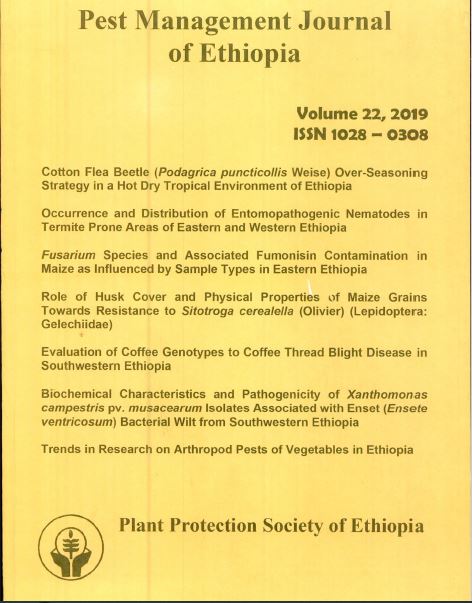Cotton Flea Beetle (Podagrica puncticollis Weise) Over-Seasoning Strategy in a Hot Dry Tropical Environment of Ethiopia
Main Article Content
Abstract
The field survey was started early in the main rainy season and during off-season of 2016 in Metema district to determine the over-seasoning strategy of cotton flea beetle. The cotton fields, sorghum fields, sesame fields and non-crop habitats (woodlots, patches of alternative hosts, crop field border edges, fallow lands and grasslands) nearby to cotton fields were assessed intensively in this study. During dry season, a site of 10m xlOm of each habitat type was reserved randomly to sample number of aestivating beetles. On each sampling date, a lm 2 sampling unit of leaf litter was collected from the reserved site of each habitat. Soil sample was taken to determine the depth at which the insect aestivate during the off-season. The highest number was recorded in the early dry months (January and February). The highest average number of aestivated beetles per m2 of leaf litter was recorded in the S. setigera (14.8) tree, while the least in sorghum grown fields (0.65). The adults of cotton flea beetles also survived the dry season at highest densities underneath loose barks at the upper parts of the trunk of standing trees mainly on loose barks of S. setigera (up tol8.8 adult beetles). The cotton flea beetle survived between 10 and 30 cm depths of soil in the aestivation sites from January to May usually in areas like woodlots and field border borders nearby cotton fields, and also within the cotton fields. These findings provided benchmark information for devising sustainable management tactics for cotton flea beetle.
Downloads
Article Details

This work is licensed under a Creative Commons Attribution-NonCommercial-NoDerivatives 4.0 International License.

